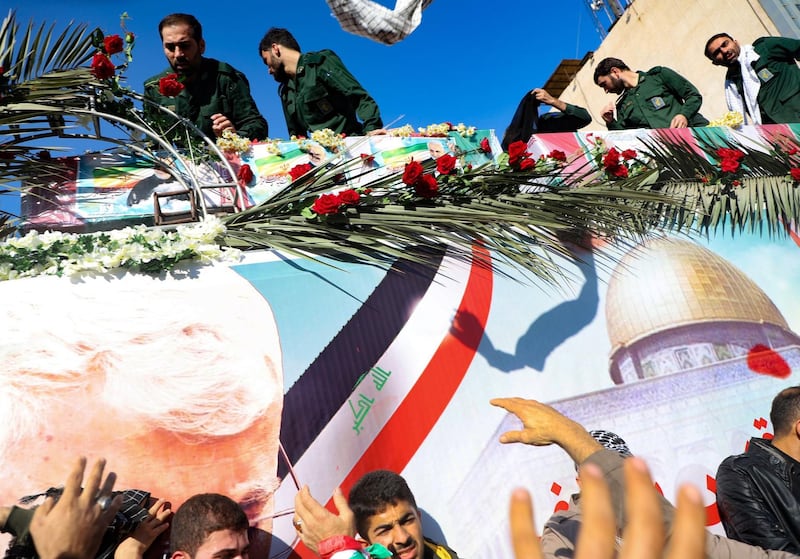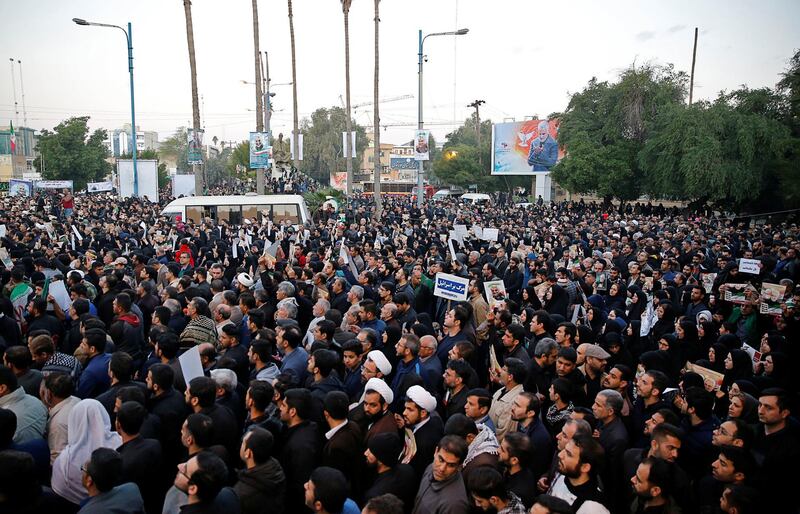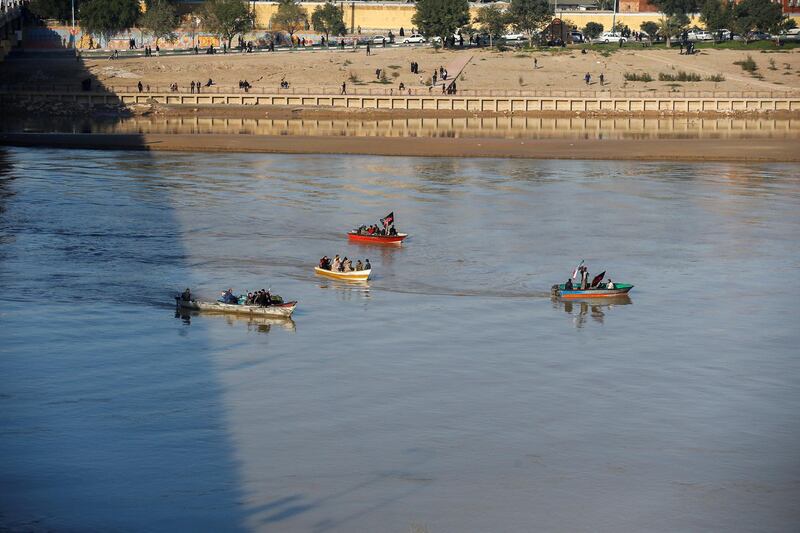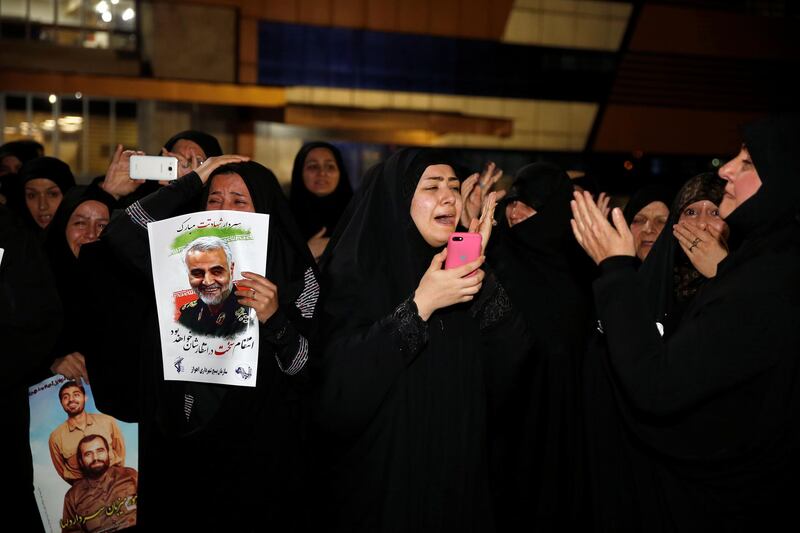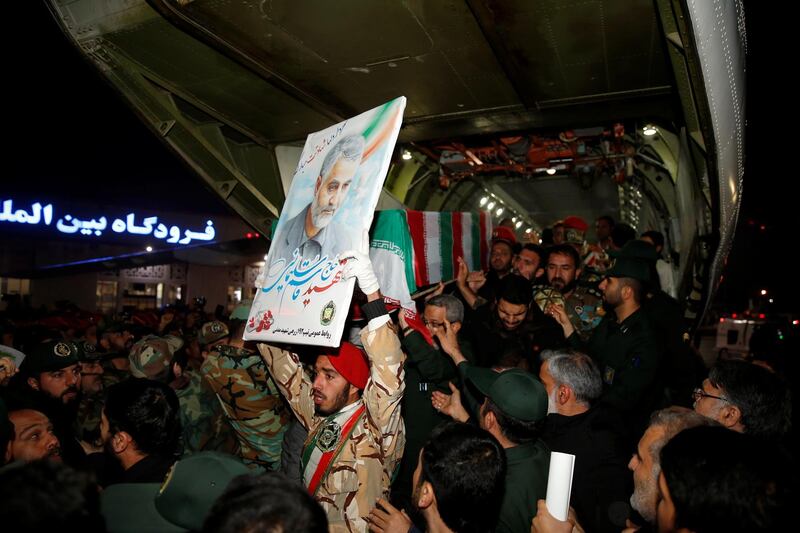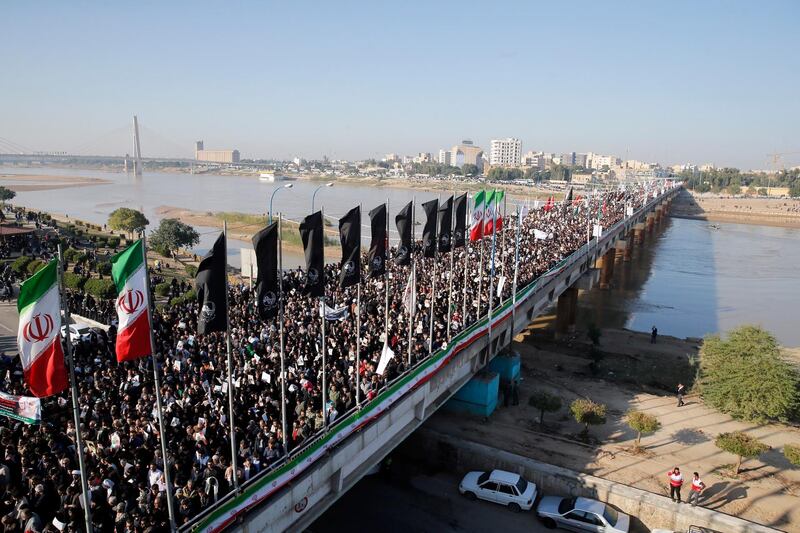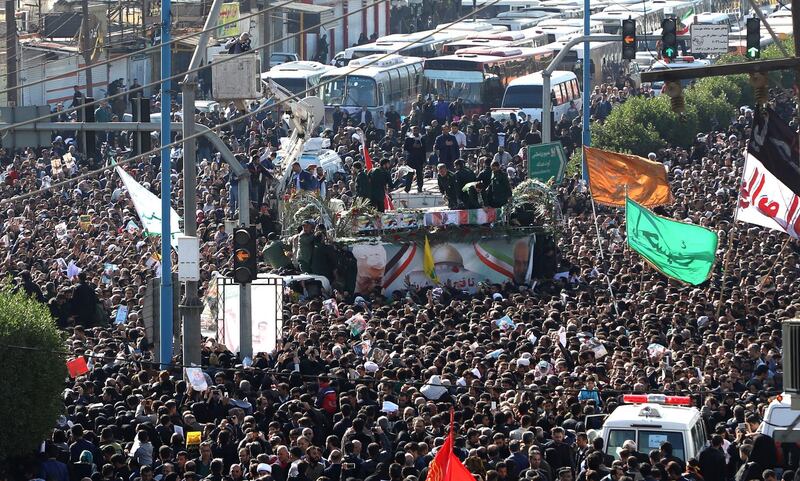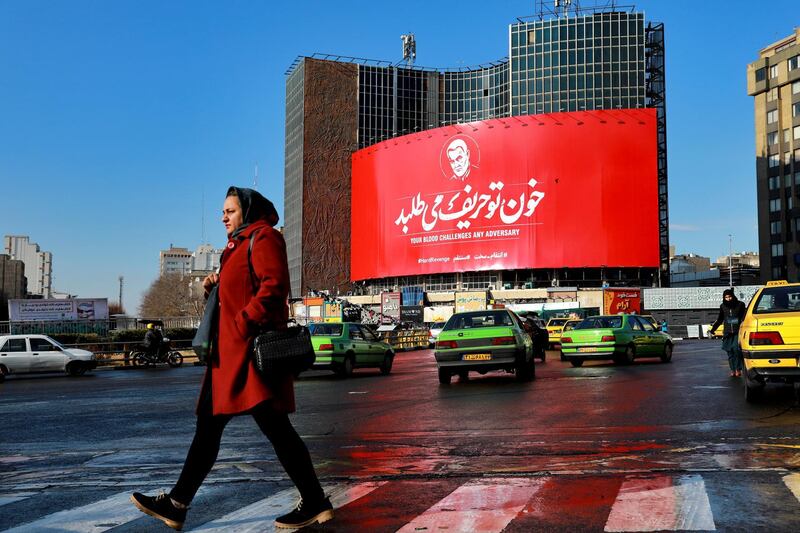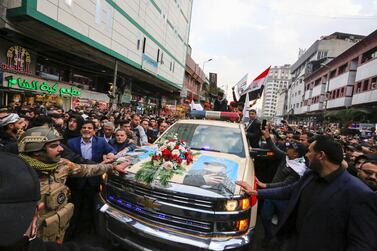The body of Gen Qassem Suleimani, who was killed in a US drone strike in Iraq on Friday, arrived in Iran on Sunday to throngs of mourners.
Suleimani’s death has led to fraught tensions between Tehran and Washington after months of trading attacks and threats that put the wider Middle East on edge.
A tide of mourners wept and beat their chests in the Iranian city of Ahvaz, paying homage to the general and chanting "death to America," at a mass gathering in the southwestern city, where Suleimani's remains arrived from Iraq before dawn. Thousands also mourned him in Baghdad on Saturday.
Mourners held up portraits of Suleimani, seen by them as a hero of the 1980-88 Iran-Iraq war and for spearheading Iran's Middle East operations as commander of the Islamic Revolutionary Guards' Quds Force.
Authorities had planned to take Suleimani’s body to Mashhad later on Sunday, as well as Tehran and Qom on Monday for public mourning processions, then on to his home town of Kerman for burial on Tuesday. However, the Tehran ceremony was cancelled due to an overwhelming turnout by mourners in Mashhad, the Revolutionary Guards said.
Suleimani was killed in a US drone strike near Baghdad international airport. He was 62. Iraqi paramilitary chief Abu Mahdi Al Muhandis was also killed.
Officials brought his body to Ahvaz, a city that was a focus of fighting during the bloody, 1980-88 war, in which the general slowly grew to prominence. He joined the Guard’s newly formed Quds, or Jersualem, force after the war, which works with Iranian proxy forces in countries like Iraq, Lebanon and Yemen.
Iran has promised “harsh revenge”. Already, a series of rockets launched in Baghdad late on Saturday fell inside or near the Green Zone, which houses government offices and foreign embassies, including the US Embassy.
US President Donald Trump threatened on Twitter to bomb 52 sites in the Islamic Republic, "representing the 52 American hostages taken by Iran many years ago, some at a very high level and important to Iran and the Iranian culture”.
Mr Trump did not identify the targets but added that they would be “HIT VERY FAST AND VERY HARD”.
The conflict is rooted in Mr Trump pulling the US out of Iran’s nuclear deal with world powers, an accord Iran will take its fifth step back from later on Sunday, a spokesman said.
"Regarding the fifth step, decisions had already been made ... but considering the current situation, some changes will be made in an important meeting tonight," foreign ministry spokesman Abbas Mousavi said in televised remarks.
The nuclear accord between Iran and world powers was agreed in 2015 and the US unilaterally withdrew from it in 2018.
The UK announced on Saturday that it is sending warships to patrol the Strait of Hormuz to "protect its citizens".
In a statement, defence minister Ben Wallace said the Navy will accompany UK-flagged ships to provide protection and had ordered the warships HMS Montrose and HMS Defender to prepare to return to escort duties.
Iranian Information and Telecommunications Minister Mohammad Javad Azari-Jahromi tweeted on Sunday that Mr Trump is "a terrorist in a suit".
"Like ISIS, Like Hitler, Like Genghis! They all hate cultures. Trump is a terrorist in a suit. He will learn history very soon that NOBODY can defeat 'the Great Iranian Nation & Culture'," Mr Jahromi said.
Suleimani was the architect of Iran’s regional policy of mobilising militias across Iraq, Syria and Lebanon, including in the war against ISIS. He was seen as responsible for attacks on US troops and American allies going back decades, as well as multiple attacks by Iranian-backed militias that have left thousands dead, as well as the Syrian regime's harsh crackdown on its people.
Though it’s unclear how or when Iran may respond, any retaliation was likely to come after three days of mourning declared in both Iran and Iraq. All eyes were on Iraq, where the US and Iran have competed for influence since the 2003 US-led invasion.
After the air strike early Friday, the US-led coalition has scaled back operations and boosted “security and defensive measures” at bases hosting coalition forces in Iraq, a coalition official said on condition of anonymity according to regulations.
Meanwhile, the US has dispatched another 3,000 troops to neighbouring Kuwait, the latest in a series of deployments in recent months as the standoff with Iran has worsened. Protesters held demonstrations in dozens of US.cities Saturday over Mr Trump’s decisions to kill Suleimani and deploy more troops to the Middle East.
In a thinly veiled threat, one of the Iran-backed militia, Asaib Ahl Al Haq, or League of the Righteous, called on Iraqi security forces to stay at least a kilometre away from US bases starting from Sunday night. However, US troops are invariably based in Iraqi military posts alongside local forces.
Iraq’s government, which is closely allied with Iran, condemned the air strike that killed Suleimani, calling it an attack on its national sovereignty. Parliament is meeting for an emergency session on Sunday, and the government has come under mounting pressure to expel the 5,200 US troops who are based in the country to help prevent a resurgence of ISIS.
Also on Saturday, Nato temporarily suspended all training activities in Iraq due to safety concerns, Canadian Defense Minister Harjit Sajjan said.
The US has ordered all citizens to leave Iraq and temporarily closed its embassy in Baghdad, where Iran-backed militiamen and their supporters staged two days of violent protests in which they breached the compound. The UK and France have warned their citizens to avoid or strictly limit travel in Iraq.

